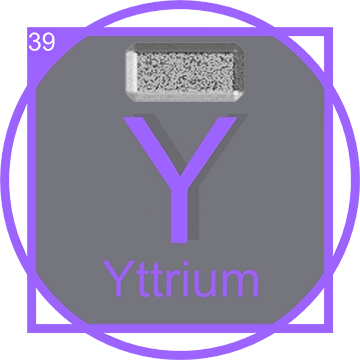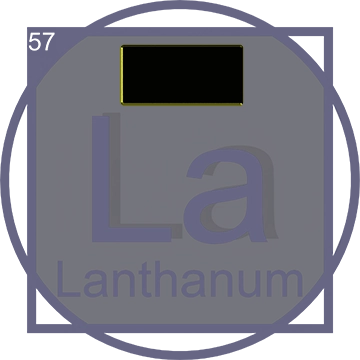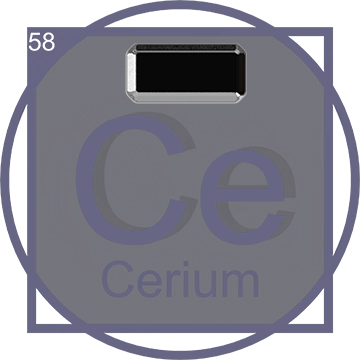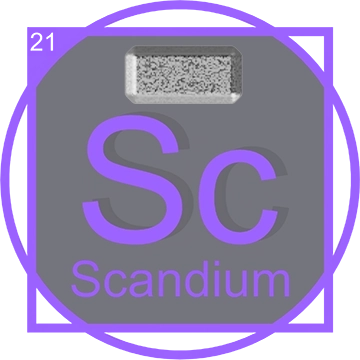Yttrium (Y): Unveiling Its Impact on Technology and Science
Yttrium, symbol Y, is a significant element in the family of rare earth metals, known for its impressive applications in various technological and scientific fields. This extensive guide explores the discovery of Yttrium, its properties, its placement in the periodic table, and its numerous applications in modern technology.
Discovery of Yttrium
Yttrium was discovered in 1794 by the Finnish chemist Johan Gadolin from a mineral that later became known as ytterbite, named after the village of Ytterby in Sweden. Initial confusion due to the mineral containing several unknown elements characterized the early research, but Yttrium was successfully isolated in its pure form in 1828 by Friedrich Wöhler. The discovery of Yttrium paved the way for the identification of other rare earth elements, highlighting its importance in the study of the Earth’s crust.

The isolation of Yttrium marked a significant milestone in the field of chemistry, as it was one of the first times a rare earth element had been identified. The process also underscored the complexity of the minerals found at Ytterby, which later proved to be the richest source of rare earth elements and provided essential insights into the composition and properties of these materials. This discovery not only expanded our understanding of the periodic table but also laid the groundwork for numerous technological advancements in electronics, lasers, and other applications where rare earth elements are indispensable.
Yttrium in the Periodic Table
Yttrium is positioned in Group 3 of the periodic table and is often considered a transition metal, despite typically being classified with the lanthanide series due to its chemical similarities. Yttrium's properties bridge those of the Group 2 metals and the lanthanides, making it a unique element that exhibits both metallic and rare earth qualities.
Physical and Chemical Properties of Pure Yttrium

Pure Yttrium is a silvery-metallic transition element that exhibits stability in air, attributed to the formation of a protective oxide film on its surface. It is relatively soft for a metal and displays a highly crystalline structure. One of Yttrium's most prominent chemical properties is its trivalency, which allows it to form a variety of compounds predominantly in a +3 oxidation state. This capability makes it extremely versatile in chemical reactions. Pure Yttrium also boasts a high melting point of 1526 °C and a boiling point of 2930 °C, properties that make it highly valuable in applications requiring resistance to high temperatures, such as in superalloys and ceramic materials.
Mining the Element Yttrium

Mining yttrium involves extracting it from various rare earth minerals where it commonly co-occurs with other elements. Notable associated elements include lanthanum, cerium, and scandium. These elements are often found together in minerals such as xenotime and monazite, which are mined for their rich content of rare earth elements. Yttrium, being a valuable component of many high-tech materials, is crucial for the production of phosphors, ceramics, and various metal alloys.
Significant mining locations for yttrium include the Bayan Obo mine in China, which is one of the largest sources of rare earth elements globally. Other important mining regions are found in Australia, particularly at the Mount Weld mine, and in the United States within the Mountain Pass mine in California. These locations are key contributors to the global supply of yttrium and other rare earth elements essential for modern technologies.
Applications of Yttrium in Technology
Yttrium Materials Science

In materials science, yttrium is used to stabilize the zirconia in oxygen sensors and fuel cell membranes because of its ability to withstand high temperatures and promote ionic conductivity. Yttrium-aluminum garnet (YAG) lasers, another significant application, are used for cutting and welding, as well as in certain cancer treatments.
Yttrium Superconductors and Electronics
Yttrium is crucial in the manufacturing of yttrium barium copper oxide (YBCO), a high-temperature superconductor that loses all electrical resistance below a certain temperature. This property is harnessed in various applications, including magnetic resonance imaging (MRI) and magnetic levitation (maglev) trains.
Yttrium Lighting and Display

Yttrium is extensively utilized in the production of phosphors that play a crucial role in various lighting applications and the displays of many electronic devices. This versatile element is key to enhancing the brightness and efficiency of LED and LCD screens, contributing significantly to their performance and energy efficiency. In addition to screens, yttrium-based phosphors are also integral in improving the color and light output in lamps and other types of lighting. This makes yttrium an invaluable component in advancing the quality and functionality of modern visual and lighting technologies.
Environmental and Safety Considerations of Yttrium
While Yttrium is not considered highly toxic, environmental concerns arise from the mining and processing of yttrium-bearing minerals. Efforts are ongoing to improve the recycling and recovery processes from used electronic devices to minimize environmental impact.
The Future of Yttrium

Advancements in technology continue to drive demand for Yttrium, particularly in high-tech and green technology sectors. Research into new compounds and the expansion of its applications in industries such as renewable energy and electronics suggest a bright future for this versatile element.













